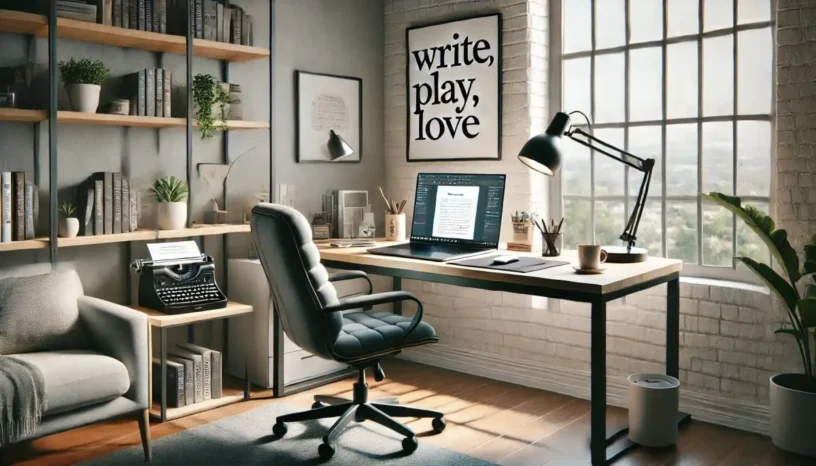So, you want to create a productive workspace, huh? First things first: no, your bed isn’t the best option. Sure, it’s comfy, but it’s also a productivity black hole. You need a real desk in a quiet area where you can channel your inner writing genius.
The Right Spot For Your Workspace
Pick a spot that’s as quiet as a library on a Tuesday morning. Your workspace should be free from distractions like TV, loud family members, or your adorable, but very needy, pets. A desk by a window can be great for natural light and an occasional glimpse of the outside world to remind you that life exists beyond your screen.
Gear Up: The Essentials
Now, let’s talk about the gear. A reliable computer is non-negotiable. Whether you’re team Mac or PC, make sure your machine can handle multiple tabs, apps, and the occasional YouTube video binge without turning into a hot mess. Pair it with a solid internet connection. Nothing kills the creative vibe faster than buffering.
Pro tip: Make sure your screen is non-reflective. Writing content is hard when all you can see is your own reflection!
Tools of the Trade
Google Docs is your new best friend. It’s perfect for drafting, editing, and sharing your work. Grammarly will save you from embarrassing typos and awkward sentences. Trust me, it’s worth it. And if you’re feeling fancy, keep a thesaurus handy. It’s like having a mini wordsmith on your desk.
Add Personal Touches To Your Workspace
Make your workspace feel like you. Add some plants—they’re not just pretty; they can boost your mood and productivity. Hang up inspiring quotes or pictures. Just keep it clutter-free; a messy desk is a messy mind, or so they say.
Comfort is Key
Invest in a good chair. Your back will thank you after hours of typing away. Ergonomics might sound like a fancy term, but it’s just about making your workspace comfortable for long stints. Keep your screen at eye level and your keyboard within easy reach.
Lighting Matters
Don’t underestimate the power of good lighting. Natural light is best, but if that’s not an option, go for a desk lamp that mimics daylight. It’ll help reduce eye strain and keep you alert.
Stay Organized
Use folders, both digital and physical, to keep your projects in order. Apps like Trello or Asana can help you manage tasks and deadlines. A whiteboard or corkboard can be great for visualizing your ideas and to-do lists.
Take Breaks
Remember to take breaks. The Pomodoro Technique is popular—work for 25 minutes, then take a 5-minute break. Repeat. It keeps you focused without burning out.
What Does Your Ideal Content Writing Workspace Look Like?
What’s your secret to a productive workspace? Have a quirky desk setup or an indispensable tool? Share your tips in the comments! Let’s create the ultimate guide to workspace awesomeness together.
Creating a productive workspace isn’t rocket science, but it does take a bit of planning and a sprinkle of personal touch. So, go on, set up your space, and watch your writing game soar!





Leave a Reply